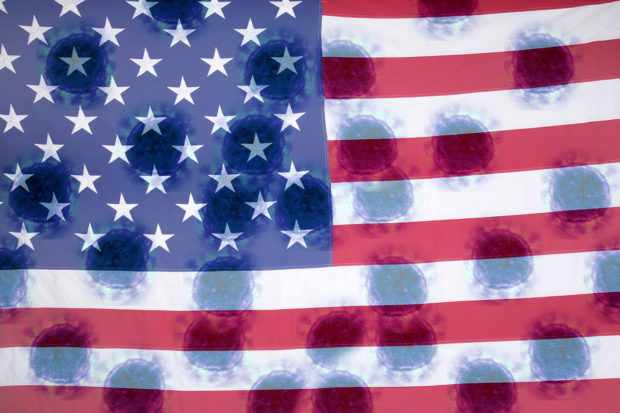Auto insurers have seen something new with the coronavirus pandemic: an historic reduction in driving due to millions of customers staying home and sheltering in place. That change led to carriers issuing between $8 billion and $10.5 billion in customer refunds, according to the Insurance Information Institute – discounts, dividends and credits that experts say carriers can easily afford, at least for now.
They’re less confident in the action, however, assuming shelter-at-home policies remain in force for the long term, or if government steps in to mandate assistance.
“These premium returns or credits have largely been in personal auto thus far and reflect the unprecedented decline in vehicle miles driven in the last month due to impacts on economic activity from efforts to combat the coronavirus. Reduced driving activity is reducing auto accidents and claims frequency to an extent that is difficult to estimate, but incurred claims losses are moving lower,” explained Jim Auden, managing director and head of North American Property/Casualty Insurance at Fitch Ratings. “These actions by insurers to date we believe are a proportional response to recently emerging trends on claims and underwriting exposures, and will impact the level of earnings in the coming months, but not be of a magnitude to move insurers towards large losses.”
More details will emerge as insurers report their Q1 2020 earnings in the weeks ahead, he added, pointing out “events are still unfolding and the second quarter will be more greatly affected by shifting economic conditions.”
Steve Guijarro, a lead analyst with S&P Global Insurance Ratings’ Property/Casualty Group, said auto insurance carriers are “in a good position” to offer the discounts they have provided to customers, which have ranged between 15 percent to 20 percent and will run typically for about two months on average. [Editor’s note: Discounts and rebates are issued pending approval by individual state regulators.]
“They derived these cost savings mostly from the data they have seen regarding miles driven, which is the rating variable most correlated to loss amounts,” Guijarro said. “Many personal insurers probably see it as a good way to drive up customer loyalty and help their insureds in a time of financial stress. Additionally, it may also help maintain loss ratios as far as future rate filings, given they don’t know how regulators would view this period of loss experience.”
Such an action helps carriers “maintain more typical performance by returning some of the profit gained as premium rebate/discounts rather than having the profits come through and then looking to negotiate abnormalities in results and normalizing for it when filing rates next year, he added.
John Andre, a managing director in the Property/Casualty Ratings division for A.M. Best, agreed that the carrier rebates and givebacks made sense, considering that reduced motor activity has led to improved loss experience, which allows for savings to be passed onto customers in the form of refunds or renewal credits.
He doesn’t expect a universal industry decision to keep the practice going longer-term, however.
“The amount is up to each individual company – so whether this practice will continue or not is going to be a company specific-decision based on what their loss experience has indicated,” Andre said.
Risks From Longer-Term Pandemic Restrictions
Andre cautioned that a longer need for insurance discounts or givebacks will carry risks for insurers, which would have to deal longer-term with a shrinking premium base.
“A shrinking premium base will clearly put expense ratio pressures on companies, though the impact of which will vary from company to company,” Andre said. He noted that the pressure could be offset, however, “by the sum of the loss ratio savings that haven’t been passed back to the client.
Auden, from Fitch Ratings, observed that risk exposure declines are also starting to happen in some commercial market segments, similar to trends for auto insurance. That could mean broader premium adjustments across multiple lines.
He said some commercial insurers are starting to “similarly respond to shifts in risk exposures and near-term claims experience with premium adjustments, some of which are influenced by state regulators.”
Auden explained it is too early to tell how broad this trend will be, though he said that lines such as workers compensation could face shifts due to the pandemic and widescale job losses.
“Lines like workers compensation have premium exposures tied largely to employee payrolls and premium naturally adjusts upward and downwards to changes in exposures through the premium audit process,” he said. “Premium audits will start turning negative in April with employment changes.”
Joe Peiser, global head of Broking for Willis Towers Watson, said insurers can handle the rebates and givebacks for now, as long as their actions to help customers remains voluntary.
“In general P&C insurers – in the aggregate – entered the crisis well capitalized. We’d expect they can weather the accommodations being required for the short and intermediate term,” Peiser said. “However, if attempts [succeed] to re-write policies to cover losses that wouldn’t otherwise have been covered, then the financial security of the industry will be jeopardized.”




















 Florida Gets 8 New P/C Carriers After Insurance Market Reforms
Florida Gets 8 New P/C Carriers After Insurance Market Reforms  Active Workstations May Improve Cognitive Performance: Study
Active Workstations May Improve Cognitive Performance: Study  USAA to Lay Off 220 Employees
USAA to Lay Off 220 Employees  AM Best Downgrades State Farm General Ratings
AM Best Downgrades State Farm General Ratings 












